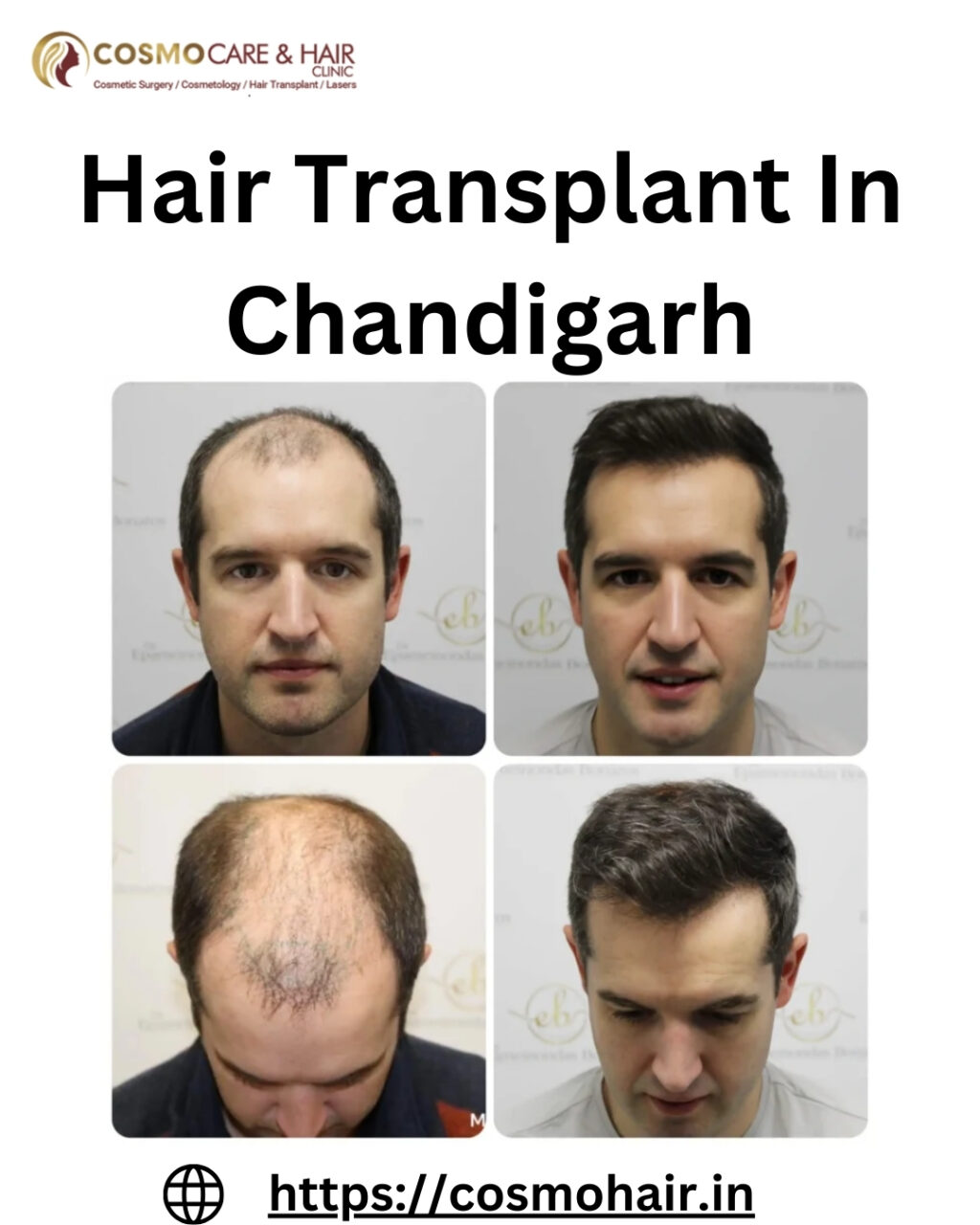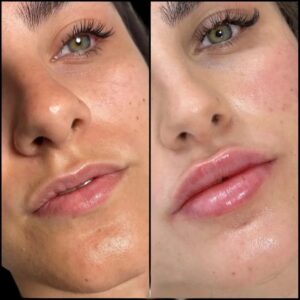
Best Hair Transplant in Chandigarh
Hair loss can significantly impact confidence and self-image, but with modern medical advancements, hair restoration is now more natural and effective than ever. If you’ve recently undergone or are planning to get the Best Hair Transplant in Chandigarh, it’s essential to understand the recovery process in detail. Knowing what to expect and how to care for your scalp after surgery ensures that you achieve healthy, long-lasting, and natural-looking results. This comprehensive guide will walk you through the recovery steps, post-surgery care, and frequently asked questions — all explained in simple, easy-to-understand language.
1. Understanding the Hair Transplant Recovery Process
After your hair transplant procedure, the healing process begins immediately. The scalp may feel slightly sore, swollen, or tight, but these sensations are normal. Every patient’s recovery timeline may differ slightly depending on the technique used—FUE (Follicular Unit Extraction) or FUT (Follicular Unit Transplantation). Typically, recovery takes place in stages. During the first few days, the transplanted area needs protection and gentle care. Over the following weeks, the newly implanted follicles start to anchor themselves into the scalp, and shedding of transplanted hairs occurs before regrowth begins. Proper aftercare and patience are essential because new hair growth usually becomes visible around 3–4 months after the surgery, with complete results appearing within 8–12 months.
The First 24 Hours After Surgery
The first day after surgery is the most sensitive period. You may notice slight swelling, redness, or scabbing in the treated area. Avoid touching, scratching, or washing your scalp for the first 24 hours. Your surgeon will likely provide a headband to minimize swelling and prescribe mild medications, including painkillers and antibiotics, to prevent infection. Sleeping with your head elevated using two pillows can also help reduce swelling. It’s best to rest and avoid any strenuous activities during this period.
Days 2 to 5: Early Healing Phase
Between the second and fifth day, the healing process speeds up. Scabs will start forming around the transplanted hair follicles — this is completely normal. You may be advised to gently wash your scalp with a mild shampoo after 48 hours, following the clinic’s instructions. Use light, circular motions with your fingertips — never scratch or rub the area. Avoid direct sunlight exposure, sweating from exercise or heat, and wearing tight hats or helmets. This phase is crucial because any disturbance to the grafts can affect their survival rate.
Days 6 to 14: Scab Shedding and Early Growth
Around one week after surgery, most swelling and discomfort begin to fade. The scabs will gradually fall off on their own — do not pick at them. By the end of the second week, the transplanted follicles should have firmly settled into your scalp. During this time, some of the transplanted hairs might fall out — this is called “shock loss.” Don’t worry, as this is a temporary and natural part of the recovery process. The roots remain intact beneath the skin, and new hair will start to grow in the coming months. Continue washing your hair gently and following your doctor’s care routine.
Weeks 3 to 6: Temporary Shedding Phase
At this stage, most of the transplanted hair may shed — this can be surprising but is a completely normal part of healing. The hair follicles enter a resting phase, preparing for new growth. You can resume light exercise and return to your normal routine, but it’s still advisable to avoid harsh sun exposure, swimming, and steam baths for another few weeks.
Months 2 to 4: The Regrowth Stage Begins
After about two months, tiny new hairs will begin to appear. These may initially look thin or uneven, but they will gradually thicken over time. You can now start to see early signs of progress, which will motivate you to keep following your care routine. Maintaining a healthy diet and scalp hygiene can help strengthen your new hair.
Months 5 to 8: Noticeable Hair Growth
This is when real transformation begins. The transplanted hair grows thicker, longer, and stronger. You can begin styling your hair gently, but avoid chemical treatments such as coloring or perming until your doctor approves. By month six, around 50–60% of your new hair will have grown. Regular check-ups with your surgeon can help monitor your progress and address any concerns.
Months 9 to 12: Final Results Take Shape
By the ninth month, your new hairline will start to look natural and full. The transplanted hairs continue to grow and blend seamlessly with your existing hair. You can now treat your new hair just like the rest — wash, style, and maintain it normally. The complete results of the Best Hair Transplant in Chandigarh usually appear around the 12-month mark, leaving you with a rejuvenated and confident look.
Tips for a Smooth Recovery
To ensure the best outcome after your hair transplant, follow these simple tips:
- Always take prescribed medications as directed.
- Avoid smoking and alcohol during the recovery phase.
- Sleep with your head elevated for the first few nights.
- Use only mild, doctor-recommended shampoos.
- Avoid scratching or picking at scabs.
- Keep yourself hydrated and maintain a balanced diet rich in protein and vitamins.
These small steps can make a huge difference in ensuring your new hair grows thick, healthy, and strong.
Common Mistakes to Avoid During Recovery
Some patients unknowingly delay recovery by making simple mistakes. Avoid these:
- Washing hair too early or aggressively.
- Exposure to sunlight or dust without protection.
- Using hair dryers or styling tools within the first few weeks.
- Ignoring follow-up appointments.
Avoiding these mistakes helps ensure that the transplanted follicles remain healthy and continue to grow properly.
Frequently Asked Questions (FAQs)
Q1: How long does it take to fully recover after a hair transplant?
Most people recover within 10–14 days, but it can take up to a year for full hair growth and natural results to appear.
Q2: Can I go back to work immediately after surgery?
It’s best to rest for at least 2–3 days before resuming light work. If your job involves physical activity, wait a week before returning.
Q3: When can I start exercising again?
Avoid heavy exercise for at least two weeks. Light walking can be resumed after five days, depending on your surgeon’s advice.
Q4: Will my transplanted hair fall out again?
The transplanted hair may shed initially (shock loss), but new growth will follow. Once grown, the hair is permanent and behaves like natural hair.
Q5: Can I use hair oil or shampoo after surgery?
Only use products approved by your doctor. Avoid hair oils for at least two weeks and start using mild, sulfate-free shampoos after 3–5 days as recommended.
Conclusion
Recovering after the Best Hair Transplant in Chandigarh requires patience, care, and consistency. Following the post-surgery instructions, maintaining scalp hygiene, and attending follow-up visits are essential to achieving the best results. Within a few months, you’ll begin to see noticeable growth, and by a year, your transformation will be complete. For professional guidance and expert care, Cosmo Care & Hair Clinic offers advanced techniques, personalized treatment plans, and experienced surgeons dedicated to helping you regain your confidence naturally. By following the right recovery steps, you’ll soon enjoy the benefits of a fuller, thicker, and natural-looking head of hair.



